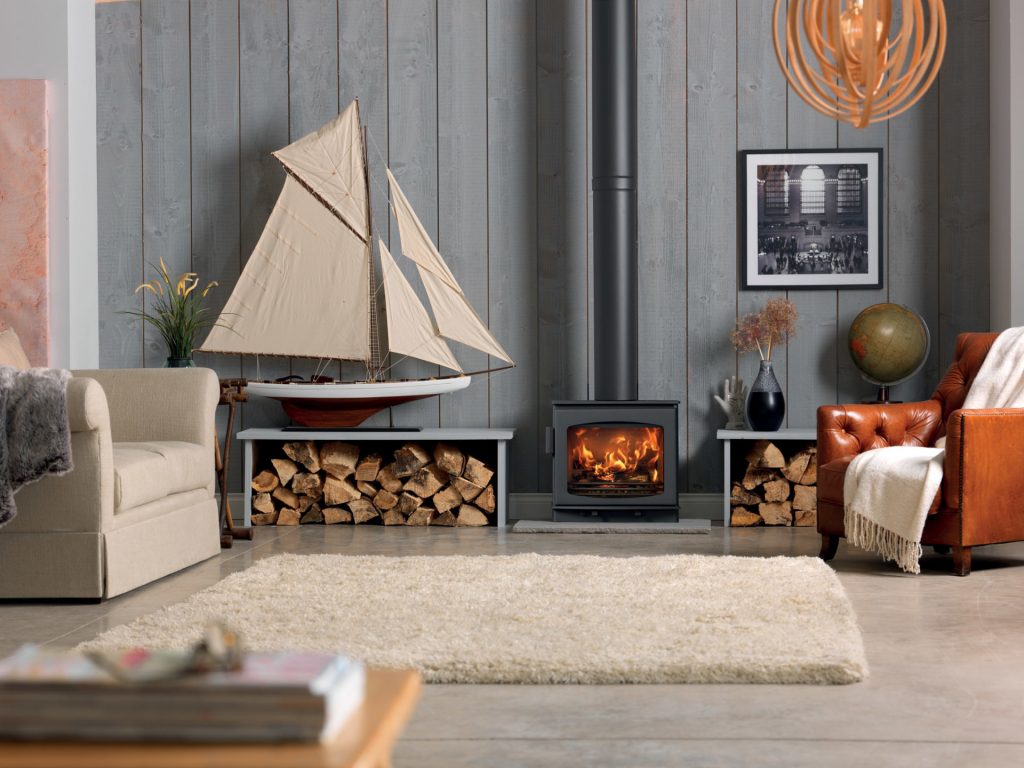A wood burner (also referred to as a wood-burning stove) is an efficient way of burning wood fuel to create heat. The wood-burning stove is made from metal (cast iron or steel) and one of the main components is the combustion area which is surrounded by fire bricks. We often have clients asking the question – do wood-burning stoves save money?
Maximising use of your wood-burning stove
Surprisingly, the vast majority of people who buy wood burners tend not to focus on the potential cost savings but more on carbon emissions and the look and feel of a wood burner. There is no doubt that they create a very homely and a very cosy atmosphere and the heat is certainly deep-seated. There are a number of ways in which you can maximise the use of your wood-burning stove and the wood fuel:-
• Heat your living room in the evening
• Open doors to the rest of your home at night time
• Use your wood-burning stove of as opposed to central heating in the wintertime
• Consider using larger wood burners to heat your water and radiators
It will obviously depend upon your budget and the type of stove you have in mind as to whether you can for example use the heat created to heat your water and run your radiators. The idea of maintaining the heat in your living room in the evening and then, when you go to bed, opening the doors to maximise air flow makes perfect sense.
Potential cost savings
It is difficult to say with any great certainty the potential cost savings of using a wood burner but what we do know is that the way in which they burn wood is far more efficient than for example a coal fire. If we take a look at the cost of wood fuel, you are talking around £50 a tonne for green wood (which will need to be dried) and roughly £150 for a 300 kg bag of kiln dried wood. According to the Biomass Energy Centre this equates to a cost of 1.2p per kilowatt for green wood (prior to drying) and 8.8p per kilowatt for kiln dried wood. This compares to around 5p for gas and upwards of 15p for electricity. This survey was carried out back in 2015 so it is safe to assume that the cost of gas and the cost of electricity have increased.
As you will see from above, the greatest cost to a wood burner is the source of wood fuel. If you can source this locally free of charge then the potential cost savings can be huge. A report by uSwitch suggested that the annual savings for a wood-burning stove can range from between £100 and £300 per annum. It will obviously depend upon usage, type of stove of and the type of fuel used not to mention where it is sourced.
Payback time on a wood burner
The same report suggested that the payback time for a wood-burning stove, purchased from new, is around 15 years (including installation) but this is difficult to calculate because of varying degrees of usage. Second-hand stoves would have a payback period of between two and three years assuming they were self-installed and signed off by the relevant parties. However, it is highly recommended that you employ the skills of a qualified engineer to install your stove to maximise efficiency and safety.
It is safe to say that the new wood burners of today are significantly more efficient than their counterparts of years gone by. Therefore, it may well end up more cost-effective to acquire a brand-new more efficient stove rather than go for a relatively cheap inefficient second-hand machine.
Conclusion
In reality it is impossible to give a firm idea of the potential cost savings and the payback period of a brand-new installed wood-burning stove or even a second-hand wood burner. Much of the cost is also associated with the source of fuel and the quality of fuel. However it is safe to say that used correctly and regularly maintained there are potential savings over and above more traditional heat sources. That said, our feedback from customers suggests that the vast majority buy a wood burner because of what it brings to their room, their home and the ambience it creates.
Can you really put a price on the ability to kick off your shoes, watch the flickering flames and the burning embers until you drift off to sleep? It is also safe to assume that in years to come the authorities will be pushing for more environmentally friendly wood burners which will likely lead to an increase in the cost of electricity and gas.

